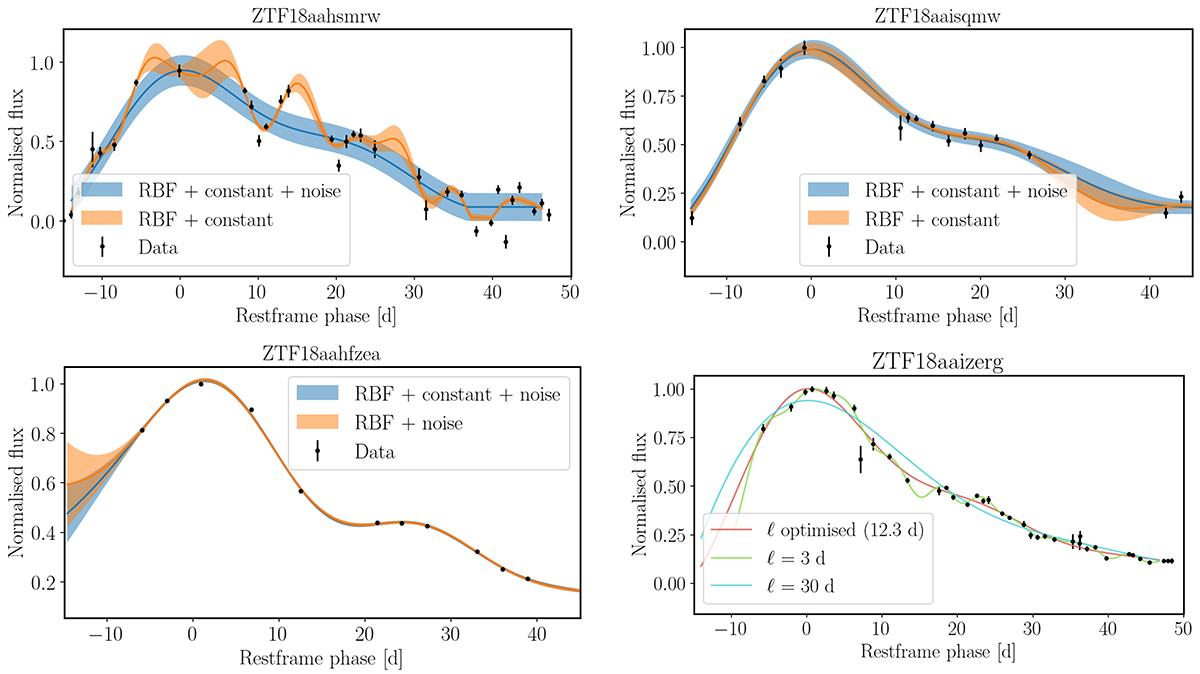Fig. 2.

Download original image
Impact of various kernel and length scale choices on a GP fit of a ZTF SN Ia light curve. If the uncertainties in the data are underestimated, not including a white noise kernel will result in unrealistic wiggles in an attempt to fit all the points (top left). Even if the uncertainties are not underestimated in the data, a lack of a white noise kernel can result in an underestimation of the uncertainty of the GP fit, as is visible between 10–30 d in the light curve shown in the top-right panel. With limited data at the edge of the fitting regions, not including a constant kernel can result in deviating behaviour at the edge regions (bottom left). We optimise the length scale during the fit in the bottom-right panel, which in this case resulted in ℓ = 12.3 d. By setting a length scale, the likelihood is higher to either over-fit if the length scale is too short (ℓ = 3 d), or to under-fit and miss important features if the length scale is too long (ℓ = 30 d). The ideal value for the length scale will depend on the cadence of the data, which varies across our sample.
Current usage metrics show cumulative count of Article Views (full-text article views including HTML views, PDF and ePub downloads, according to the available data) and Abstracts Views on Vision4Press platform.
Data correspond to usage on the plateform after 2015. The current usage metrics is available 48-96 hours after online publication and is updated daily on week days.
Initial download of the metrics may take a while.


